Chuwi Hi10 Max conversível em análise - Uma alternativa econômica ao Surface Pro com CPU Intel
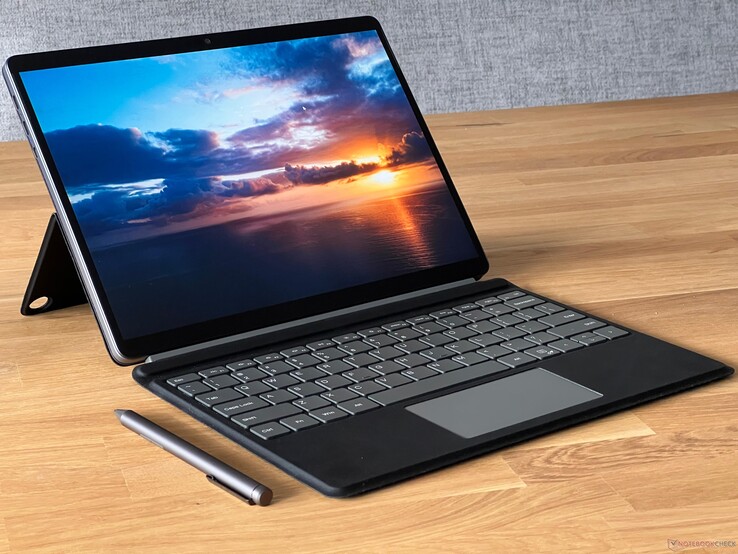
Com o novo Hi10 Max, a Chuwi apresenta um conversível acessível com um teclado e uma caneta stylus acopláveis. Ele é alimentado por um processador Intel N100 de 12ª geração, emparelhado com 12 GB de RAM. A tela IPS apresenta uma alta resolução de 2.880 x 1.920 em uma proporção de 3:2, e o SSD oferece 512 GB de armazenamento. Com o preço de US$ 319 para o pacote completo (incluindo o tablet, o teclado e a caneta stylus), devido ao seu baixo preço, ele é comparado principalmente aos tablets Android.
Possíveis concorrentes em comparação
Avaliação | Versão | Data | Modelo | Peso | Altura | Size | Resolução | Preço |
|---|---|---|---|---|---|---|---|---|
| 79 % | v8 | 10/2024 | Chuwi Hi10 Max N100, UHD Graphics 24EUs (Alder Lake-N) | 768 g | 9 mm | 12.96" | 2880x1920 | |
| 78.7 % | v8 | 09/2024 | Xiaomi Redmi Pad Pro SD 7s Gen 2, Adreno 710 | 571 g | 7.52 mm | 12.10" | 2560x1600 | |
| 74.8 % | v8 | 06/2024 | Lenovo Tab P12 Paper Dimensity 7050, Mali-G68 MP4 | 615 g | 6.9 mm | 12.70" | 2944x1840 | |
| 81.2 % v7 (old) | v7 (old) | 06/2024 | Teclast T65 Max Helio G99, Mali-G57 MP2 | 710 g | 8.2 mm | 12.95" | 1920x1200 | |
| 79.5 % v7 (old) | v7 (old) | 06/2024 | Asus BR1104CGA-N00007XA N100, UHD Graphics 24EUs (Alder Lake-N) | 1.6 kg | 21.2 mm | 11.60" | 1366x768 |
Os Top 10
» Os Top 10 Portáteis Multimídia
» Os Top 10 Portáteis de Jogos
» Os Top 10 Portáteis Leves para Jogos
» Os Top 10 Portáteis Acessíveis de Escritório/Empresariais
» Os Top 10 Portáteis Premium de Escritório/Empresariais
» Os Top 10 dos Portáteis Workstation
» Os Top 10 Subportáteis
» Os Top 10 Ultrabooks
» Os Top 10 Conversíveis
» Os Top 10 Tablets
» Os Top 10 Smartphones
» A melhores Telas de Portáteis Analisadas Pela Notebookcheck
» Top 10 dos portáteis abaixo dos 500 Euros da Notebookcheck
» Top 10 dos Portáteis abaixo dos 300 Euros
Estojo e conectividade
O Hi10 Max é um tablet sem suporte integrado. A Chuwi utiliza uma construção metálica e a carcaça cinza-escura parece de alta qualidade, embora sejam notados leves ruídos de rangidos quando o dispositivo é torcido. A tela também pode ser pressionada visivelmente com um pouco de força, mas isso não afeta negativamente a funcionalidade. As entradas de toque normais não causam esse problema. A embalagem inclui uma tampa traseira com um recorte para a câmera, cuja metade inferior se prende magneticamente à caixa. A parte superior pode ser dobrada para baixo para funcionar como um suporte, o que funciona bem na prática e oferece proteção adicional. A tampa do teclado opcional é fixada na parte inferior, mas a conexão não é particularmente estável e tende a se soltar rapidamente.
Apenas 768 gramas compõem a espessura do tablet, que é de 9 mm. Com as duas capas acopladas, o peso total aumenta para 1.375 gramas, tornando o pacote geral mais espesso do que a maioria dos laptops modernos, com pouco menos de 2 cm. A fonte de alimentação compacta de 36 watts é leve e pesa 135 gramas.
Em termos de recursos, o Hi10 Max cobre o essencial, incluindo Wi-Fi 6 (embora 1x1), Bluetooth 5.2 e, é claro, portas USB. Além das duas portas USB-C, há também uma porta USB-A, que se mostra muito prática no uso diário. Uma saída micro HDMI está incluída, embora exija um adaptador. O tablet não oferece opções para manutenção ou atualizações. Quanto às câmeras, a câmera frontal de 5 MP e um sensor traseiro de 8 MP com foco automático capturam imagens decentes.
| Networking | |
| Chuwi Hi10 Max | |
| iperf3 transmit AXE11000 | |
| iperf3 receive AXE11000 | |
| Xiaomi Redmi Pad Pro | |
| iperf3 transmit AXE11000 | |
| iperf3 receive AXE11000 | |
| Lenovo Tab P12 Paper | |
| iperf3 transmit AXE11000 | |
| iperf3 receive AXE11000 | |
| Teclast T65 Max | |
| iperf3 transmit AXE11000 | |
| iperf3 receive AXE11000 | |
| Asus BR1104CGA-N00007XA | |
| iperf3 transmit AXE11000 | |
| iperf3 receive AXE11000 | |

Dispositivos de entrada - Tela sensível ao toque e teclado retroiluminado
A tela sensível ao toque capacitiva oferece um deslizamento suave e funciona sem problemas. A caneta stylus incluída (H7, com 1024 níveis de pressão e uma bateria AAAA) é confortável na mão, embora não possa ser acoplada ao dispositivo. O teclado da capa opcional é iluminado, mas o curso das teclas é curto e as teclas são um pouco barulhentas. No geral, a experiência de digitação é decente e melhor do que usar um teclado na tela. Entretanto, somente o layout em inglês está disponível. Há uma luz de fundo branca de dois estágios, o que é um recurso agradável. O ClickPad é bem pequeno, mas cumpre sua função.
Tela - IPS com resolução de 3K
A Chuwi usa uma tela IPS de 12,96 polegadas da LG Philips em uma proporção de 3:2, apresentando uma alta resolução de 2.880 x 1.920 pixels. A impressão visual subjetiva do painel de 60 Hz é geralmente muito boa, pois o conteúdo é exibido com nitidez e cores suficientemente vivas. No entanto, há uma pequena granulação em superfícies brilhantes devido à tela sensível ao toque e podem ser observados leves efeitos de fantasmas, pois os tempos de resposta são um pouco lentos. Também há halos visíveis em imagens escuras, mas o PWM (Pulse Width Modulation) não é usado. Os reflexos do painel brilhante podem ser um problema em ambientes externos, mas a estabilidade do ângulo de visão é aceitável.
Em nossas medições usando o software profissional CalMAN, o monitor atinge um brilho médio de mais de 400 cd/m² e uma alta taxa de contraste máximo. Considerando a faixa de preço, isso é bastante impressionante. No entanto, o perfil de cores pré-instalado mostra um notável tom azulado, que conseguimos eliminar com nossa calibração (o perfil está disponível para download gratuito na caixa à direita). Também conseguimos reduzir significativamente os desvios de cor, embora o valor de 100% ainda exceda um pouco a meta de 3. Com cobertura quase total de sRGB, a tela é adequada até mesmo para edição de imagens.
| |||||||||||||||||||||||||
iluminação: 88 %
iluminação com acumulador: 419 cd/m²
Contraste: 2328:1 (Preto: 0.18 cd/m²)
ΔE Color 4 | 0.5-29.43 Ø4.87, calibrated: 1.4
ΔE Greyscale 5.3 | 0.5-98 Ø5.1
68.5% AdobeRGB 1998 (Argyll 2.2.0 3D)
96.8% sRGB (Argyll 2.2.0 3D)
67.2% Display P3 (Argyll 2.2.0 3D)
Gamma: 2.27
| Chuwi Hi10 Max LP129WT112684, IPS, 2880x1920, 13", 60 Hz | Xiaomi Redmi Pad Pro IPS, 2560x1600, 12.1", 120 Hz | Lenovo Tab P12 Paper LTPS, 2944x1840, 12.7", 60 Hz | Teclast T65 Max IPS, 1920x1200, 13", 60 Hz | Asus BR1104CGA-N00007XA TN, 1366x768, 11.6", 60 Hz | |
|---|---|---|---|---|---|
| Display | -35% | ||||
| Display P3 Coverage | 67.2 | 43.19 -36% | |||
| sRGB Coverage | 96.8 | 64.95 -33% | |||
| AdobeRGB 1998 Coverage | 68.5 | 44.62 -35% | |||
| Response Times | 35% | 3% | -8% | 8% | |
| Response Time Grey 50% / Grey 80% * | 44.8 ? | 25 ? 44% | 35.7 ? 20% | 46.7 ? -4% | 37.68 ? 16% |
| Response Time Black / White * | 19.8 ? | 14.6 ? 26% | 22.7 ? -15% | 22.1 ? -12% | 20 ? -1% |
| PWM Frequency | 25000 ? | ||||
| Screen | -9% | -24% | -77% | -56% | |
| Brightness middle | 419 | 513 22% | 148 -65% | 296 -29% | 290 -31% |
| Brightness | 413 | 480 16% | 139 -66% | 290 -30% | 274 -34% |
| Brightness Distribution | 88 | 86 -2% | 90 2% | 87 -1% | 87 -1% |
| Black Level * | 0.18 | 0.4 -122% | 0.3 -67% | 0.47 -161% | 0.48 -167% |
| Contrast | 2328 | 1283 -45% | 493 -79% | 630 -73% | 604 -74% |
| Colorchecker dE 2000 * | 4 | 2.82 29% | 3.59 10% | 7.1 -78% | 7.68 -92% |
| Colorchecker dE 2000 max. * | 7.6 | 8.83 -16% | 5.52 27% | 22.2 -192% | 9.6 -26% |
| Colorchecker dE 2000 calibrated * | 1.4 | 1.9 -36% | |||
| Greyscale dE 2000 * | 5.3 | 2.9 45% | 3 43% | 8 -51% | 7.4 -40% |
| Gamma | 2.27 97% | 2.265 97% | 2.243 98% | 2.204 100% | 2.658 83% |
| CCT | 7588 86% | 7189 90% | 7115 91% | 7992 81% | 8017 81% |
| Média Total (Programa/Configurações) | 13% /
-0% | -11% /
-19% | -43% /
-63% | -28% /
-42% |
* ... menor é melhor
Exibir tempos de resposta
| ↔ Tempo de resposta preto para branco | ||
|---|---|---|
| 19.8 ms ... ascensão ↗ e queda ↘ combinadas | ↗ 8.1 ms ascensão | |
| ↘ 11.7 ms queda | ||
| A tela mostra boas taxas de resposta em nossos testes, mas pode ser muito lenta para jogadores competitivos. Em comparação, todos os dispositivos testados variam de 0.1 (mínimo) a 240 (máximo) ms. » 40 % de todos os dispositivos são melhores. Isso significa que o tempo de resposta medido é semelhante à média de todos os dispositivos testados (20.8 ms). | ||
| ↔ Tempo de resposta 50% cinza a 80% cinza | ||
| 44.8 ms ... ascensão ↗ e queda ↘ combinadas | ↗ 20.8 ms ascensão | |
| ↘ 24 ms queda | ||
| A tela mostra taxas de resposta lentas em nossos testes e será insatisfatória para os jogadores. Em comparação, todos os dispositivos testados variam de 0.165 (mínimo) a 636 (máximo) ms. » 74 % de todos os dispositivos são melhores. Isso significa que o tempo de resposta medido é pior que a média de todos os dispositivos testados (32.5 ms). | ||
Cintilação da tela / PWM (modulação por largura de pulso)
| Tela tremeluzindo / PWM não detectado | |||
[pwm_comparison] Em comparação: 53 % de todos os dispositivos testados não usam PWM para escurecer a tela. Se PWM foi detectado, uma média de 8516 (mínimo: 5 - máximo: 343500) Hz foi medida. | |||
Desempenho - Intel N100 e 12 GB de RAM
O Chuwi Hi10 Max é equipado com o processador Intel N100um processador normalmente encontrado em mini PCs. Ele é baseado na geração Alder Lake da Intel e apresenta 4 núcleos de eficiência sem hyperthreading, com uma velocidade de clock de até 3,4 GHz. Ele pode consumir até 13 watts, o que o torna um dos sistemas N100 mais rápidos do nosso banco de dados. O desempenho permanece estável mesmo sob carga prolongada e durante a execução com energia da bateria.
Com 12 GB de RAM, o Hi10 Max oferece espaço de desempenho suficiente para tarefas básicas. Graças ao SSD NVMe, o sistema responde rapidamente às entradas e oferece armazenamento suficiente com sua capacidade de 512 GB. A GPU integrada UHD Graphics lida bem com vídeos de alta resolução, mas o dispositivo não é adequado para jogos. Para jogos, o senhor deve se limitar a jogos simples de tabuleiro ou de cartas disponíveis na Microsoft Store.
Cinebench R15 Multi continuous test
Cinebench R23: Multi Core | Single Core
Cinebench R20: CPU (Multi Core) | CPU (Single Core)
Cinebench R15: CPU Multi 64Bit | CPU Single 64Bit
Blender: v2.79 BMW27 CPU
7-Zip 18.03: 7z b 4 | 7z b 4 -mmt1
Geekbench 6.4: Multi-Core | Single-Core
Geekbench 5.5: Multi-Core | Single-Core
HWBOT x265 Benchmark v2.2: 4k Preset
LibreOffice : 20 Documents To PDF
R Benchmark 2.5: Overall mean
| CPU Performance Rating | |
| Média da turma Convertible | |
| Geekom MiniAir 12 | |
| Chuwi Hi10 Max | |
| Minisforum Venus Series UN100D | |
| Média Intel Processor N100 | |
| Xiaomi Redmi Pad Pro -12! | |
| Newsmay AC8F-POE | |
| Lenovo Tab P12 Paper -12! | |
| Asus BR1104CGA-N00007XA | |
| Teclast T65 Max -12! | |
| Cinebench R23 / Multi Core | |
| Média da turma Convertible (2949 - 29063, n=65, últimos 2 anos) | |
| Geekom MiniAir 12 | |
| Chuwi Hi10 Max | |
| Média Intel Processor N100 (1577 - 2983, n=8) | |
| Minisforum Venus Series UN100D | |
| Newsmay AC8F-POE | |
| Asus BR1104CGA-N00007XA | |
| Cinebench R23 / Single Core | |
| Média da turma Convertible (914 - 2163, n=65, últimos 2 anos) | |
| Geekom MiniAir 12 | |
| Chuwi Hi10 Max | |
| Minisforum Venus Series UN100D | |
| Média Intel Processor N100 (747 - 942, n=8) | |
| Newsmay AC8F-POE | |
| Asus BR1104CGA-N00007XA | |
| Cinebench R20 / CPU (Multi Core) | |
| Média da turma Convertible (1124 - 11357, n=64, últimos 2 anos) | |
| Geekom MiniAir 12 | |
| Chuwi Hi10 Max | |
| Média Intel Processor N100 (590 - 1139, n=8) | |
| Minisforum Venus Series UN100D | |
| Newsmay AC8F-POE | |
| Asus BR1104CGA-N00007XA | |
| Cinebench R20 / CPU (Single Core) | |
| Média da turma Convertible (348 - 827, n=64, últimos 2 anos) | |
| Geekom MiniAir 12 | |
| Chuwi Hi10 Max | |
| Minisforum Venus Series UN100D | |
| Média Intel Processor N100 (285 - 358, n=8) | |
| Newsmay AC8F-POE | |
| Asus BR1104CGA-N00007XA | |
| Cinebench R15 / CPU Multi 64Bit | |
| Média da turma Convertible (478 - 4830, n=67, últimos 2 anos) | |
| Geekom MiniAir 12 | |
| Chuwi Hi10 Max | |
| Média Intel Processor N100 (246 - 479, n=8) | |
| Minisforum Venus Series UN100D | |
| Newsmay AC8F-POE | |
| Asus BR1104CGA-N00007XA | |
| Cinebench R15 / CPU Single 64Bit | |
| Média da turma Convertible (149.8 - 317, n=64, últimos 2 anos) | |
| Geekom MiniAir 12 | |
| Chuwi Hi10 Max | |
| Minisforum Venus Series UN100D | |
| Média Intel Processor N100 (118.8 - 155, n=8) | |
| Newsmay AC8F-POE | |
| Asus BR1104CGA-N00007XA | |
| Blender / v2.79 BMW27 CPU | |
| Asus BR1104CGA-N00007XA | |
| Newsmay AC8F-POE | |
| Minisforum Venus Series UN100D | |
| Média Intel Processor N100 (1017 - 1956, n=8) | |
| Chuwi Hi10 Max | |
| Geekom MiniAir 12 | |
| Média da turma Convertible (107 - 1051, n=62, últimos 2 anos) | |
| 7-Zip 18.03 / 7z b 4 | |
| Média da turma Convertible (12977 - 121368, n=64, últimos 2 anos) | |
| Geekom MiniAir 12 | |
| Chuwi Hi10 Max | |
| Média Intel Processor N100 (7532 - 13291, n=8) | |
| Minisforum Venus Series UN100D | |
| Newsmay AC8F-POE | |
| Asus BR1104CGA-N00007XA | |
| 7-Zip 18.03 / 7z b 4 -mmt1 | |
| Média da turma Convertible (3672 - 6540, n=64, últimos 2 anos) | |
| Minisforum Venus Series UN100D | |
| Chuwi Hi10 Max | |
| Geekom MiniAir 12 | |
| Média Intel Processor N100 (3046 - 3958, n=8) | |
| Newsmay AC8F-POE | |
| Asus BR1104CGA-N00007XA | |
| Geekbench 6.4 / Multi-Core | |
| Média da turma Convertible (2291 - 21269, n=55, últimos 2 anos) | |
| Geekom MiniAir 12 | |
| Chuwi Hi10 Max | |
| Minisforum Venus Series UN100D | |
| Média Intel Processor N100 (2283 - 3282, n=8) | |
| Newsmay AC8F-POE | |
| Xiaomi Redmi Pad Pro | |
| Lenovo Tab P12 Paper | |
| Asus BR1104CGA-N00007XA | |
| Teclast T65 Max | |
| Geekbench 6.4 / Single-Core | |
| Média da turma Convertible (1003 - 2978, n=56, últimos 2 anos) | |
| Minisforum Venus Series UN100D | |
| Geekom MiniAir 12 | |
| Chuwi Hi10 Max | |
| Newsmay AC8F-POE | |
| Média Intel Processor N100 (1070 - 1245, n=8) | |
| Asus BR1104CGA-N00007XA | |
| Xiaomi Redmi Pad Pro | |
| Lenovo Tab P12 Paper | |
| Teclast T65 Max | |
| Geekbench 5.5 / Multi-Core | |
| Média da turma Convertible (2188 - 22023, n=64, últimos 2 anos) | |
| Geekom MiniAir 12 | |
| Chuwi Hi10 Max | |
| Minisforum Venus Series UN100D | |
| Xiaomi Redmi Pad Pro | |
| Média Intel Processor N100 (1911 - 2896, n=9) | |
| Newsmay AC8F-POE | |
| Lenovo Tab P12 Paper | |
| Asus BR1104CGA-N00007XA | |
| Teclast T65 Max | |
| Geekbench 5.5 / Single-Core | |
| Média da turma Convertible (806 - 2275, n=64, últimos 2 anos) | |
| Geekom MiniAir 12 | |
| Minisforum Venus Series UN100D | |
| Chuwi Hi10 Max | |
| Média Intel Processor N100 (915 - 1018, n=9) | |
| Newsmay AC8F-POE | |
| Asus BR1104CGA-N00007XA | |
| Xiaomi Redmi Pad Pro | |
| Lenovo Tab P12 Paper | |
| Teclast T65 Max | |
| HWBOT x265 Benchmark v2.2 / 4k Preset | |
| Média da turma Convertible (3.43 - 36.2, n=64, últimos 2 anos) | |
| Geekom MiniAir 12 | |
| Chuwi Hi10 Max | |
| Média Intel Processor N100 (1.72 - 3.49, n=8) | |
| Minisforum Venus Series UN100D | |
| Newsmay AC8F-POE | |
| Asus BR1104CGA-N00007XA | |
| LibreOffice / 20 Documents To PDF | |
| Asus BR1104CGA-N00007XA | |
| Newsmay AC8F-POE | |
| Média Intel Processor N100 (67 - 129.6, n=8) | |
| Chuwi Hi10 Max | |
| Minisforum Venus Series UN100D | |
| Geekom MiniAir 12 | |
| Média da turma Convertible (42.7 - 84.3, n=63, últimos 2 anos) | |
| R Benchmark 2.5 / Overall mean | |
| Asus BR1104CGA-N00007XA | |
| Newsmay AC8F-POE | |
| Média Intel Processor N100 (0.822 - 1.06, n=8) | |
| Minisforum Venus Series UN100D | |
| Chuwi Hi10 Max | |
| Geekom MiniAir 12 | |
| Média da turma Convertible (0.3985 - 0.84, n=63, últimos 2 anos) | |
* ... menor é melhor
AIDA64: FP32 Ray-Trace | FPU Julia | CPU SHA3 | CPU Queen | FPU SinJulia | FPU Mandel | CPU AES | CPU ZLib | FP64 Ray-Trace | CPU PhotoWorxx
| Performance Rating | |
| Média da turma Convertible | |
| Chuwi Hi10 Max | |
| Minisforum Venus Series UN100D | |
| Asus BR1104CGA-N00007XA | |
| Newsmay AC8F-POE | |
| Média Intel Processor N100 | |
| Geekom MiniAir 12 | |
| AIDA64 / FP32 Ray-Trace | |
| Média da turma Convertible (2179 - 64158, n=65, últimos 2 anos) | |
| Chuwi Hi10 Max | |
| Asus BR1104CGA-N00007XA | |
| Minisforum Venus Series UN100D | |
| Newsmay AC8F-POE | |
| Média Intel Processor N100 (837 - 2179, n=8) | |
| Geekom MiniAir 12 | |
| AIDA64 / FPU Julia | |
| Média da turma Convertible (11392 - 183760, n=64, últimos 2 anos) | |
| Chuwi Hi10 Max | |
| Asus BR1104CGA-N00007XA | |
| Minisforum Venus Series UN100D | |
| Newsmay AC8F-POE | |
| Média Intel Processor N100 (4395 - 11392, n=8) | |
| Geekom MiniAir 12 | |
| AIDA64 / CPU SHA3 | |
| Média da turma Convertible (797 - 8151, n=64, últimos 2 anos) | |
| Chuwi Hi10 Max | |
| Asus BR1104CGA-N00007XA | |
| Minisforum Venus Series UN100D | |
| Média Intel Processor N100 (307 - 797, n=8) | |
| Newsmay AC8F-POE | |
| Geekom MiniAir 12 | |
| AIDA64 / CPU Queen | |
| Média da turma Convertible (22413 - 145339, n=64, últimos 2 anos) | |
| Minisforum Venus Series UN100D | |
| Chuwi Hi10 Max | |
| Newsmay AC8F-POE | |
| Asus BR1104CGA-N00007XA | |
| Média Intel Processor N100 (8663 - 22605, n=8) | |
| Geekom MiniAir 12 | |
| AIDA64 / FPU SinJulia | |
| Média da turma Convertible (1120 - 29155, n=64, últimos 2 anos) | |
| Chuwi Hi10 Max | |
| Minisforum Venus Series UN100D | |
| Asus BR1104CGA-N00007XA | |
| Newsmay AC8F-POE | |
| Média Intel Processor N100 (430 - 1120, n=8) | |
| Geekom MiniAir 12 | |
| AIDA64 / FPU Mandel | |
| Média da turma Convertible (5749 - 97193, n=64, últimos 2 anos) | |
| Chuwi Hi10 Max | |
| Asus BR1104CGA-N00007XA | |
| Minisforum Venus Series UN100D | |
| Newsmay AC8F-POE | |
| Média Intel Processor N100 (2217 - 5749, n=8) | |
| Geekom MiniAir 12 | |
| AIDA64 / CPU AES | |
| Média da turma Convertible (21774 - 169089, n=64, últimos 2 anos) | |
| Chuwi Hi10 Max | |
| Minisforum Venus Series UN100D | |
| Média Intel Processor N100 (8421 - 21774, n=8) | |
| Asus BR1104CGA-N00007XA | |
| Newsmay AC8F-POE | |
| Geekom MiniAir 12 | |
| AIDA64 / CPU ZLib | |
| Média da turma Convertible (218 - 2001, n=64, últimos 2 anos) | |
| Chuwi Hi10 Max | |
| Asus BR1104CGA-N00007XA | |
| Minisforum Venus Series UN100D | |
| Newsmay AC8F-POE | |
| Média Intel Processor N100 (81.7 - 218, n=8) | |
| Geekom MiniAir 12 | |
| AIDA64 / FP64 Ray-Trace | |
| Média da turma Convertible (1169 - 34297, n=64, últimos 2 anos) | |
| Chuwi Hi10 Max | |
| Minisforum Venus Series UN100D | |
| Asus BR1104CGA-N00007XA | |
| Newsmay AC8F-POE | |
| Média Intel Processor N100 (465 - 1169, n=8) | |
| Geekom MiniAir 12 | |
| AIDA64 / CPU PhotoWorxx | |
| Média da turma Convertible (13761 - 81626, n=64, últimos 2 anos) | |
| Chuwi Hi10 Max | |
| Asus BR1104CGA-N00007XA | |
| Minisforum Venus Series UN100D | |
| Média Intel Processor N100 (5384 - 16824, n=8) | |
| Newsmay AC8F-POE | |
| Geekom MiniAir 12 | |
CrossMark: Overall | Productivity | Creativity | Responsiveness
WebXPRT 3: Overall
WebXPRT 4: Overall
Mozilla Kraken 1.1: Total
| PCMark 10 / Score | |
| Média da turma Convertible (3229 - 9125, n=62, últimos 2 anos) | |
| Chuwi Hi10 Max | |
| Geekom MiniAir 12 | |
| Minisforum Venus Series UN100D | |
| Média Intel Processor N100, Intel UHD Graphics 24EUs (Alder Lake-N) (2786 - 3229, n=8) | |
| Asus BR1104CGA-N00007XA | |
| Newsmay AC8F-POE | |
| PCMark 10 / Essentials | |
| Média da turma Convertible (7233 - 12005, n=62, últimos 2 anos) | |
| Minisforum Venus Series UN100D | |
| Chuwi Hi10 Max | |
| Geekom MiniAir 12 | |
| Média Intel Processor N100, Intel UHD Graphics 24EUs (Alder Lake-N) (6068 - 7482, n=8) | |
| Asus BR1104CGA-N00007XA | |
| Newsmay AC8F-POE | |
| PCMark 10 / Productivity | |
| Média da turma Convertible (5062 - 10800, n=62, últimos 2 anos) | |
| Chuwi Hi10 Max | |
| Geekom MiniAir 12 | |
| Minisforum Venus Series UN100D | |
| Média Intel Processor N100, Intel UHD Graphics 24EUs (Alder Lake-N) (4167 - 5062, n=8) | |
| Newsmay AC8F-POE | |
| Asus BR1104CGA-N00007XA | |
| PCMark 10 / Digital Content Creation | |
| Média da turma Convertible (2496 - 16551, n=62, últimos 2 anos) | |
| Chuwi Hi10 Max | |
| Geekom MiniAir 12 | |
| Média Intel Processor N100, Intel UHD Graphics 24EUs (Alder Lake-N) (2126 - 2497, n=8) | |
| Minisforum Venus Series UN100D | |
| Newsmay AC8F-POE | |
| Asus BR1104CGA-N00007XA | |
| CrossMark / Overall | |
| Média da turma Convertible (524 - 2274, n=64, últimos 2 anos) | |
| Chuwi Hi10 Max | |
| Minisforum Venus Series UN100D | |
| Geekom MiniAir 12 | |
| Média Intel Processor N100, Intel UHD Graphics 24EUs (Alder Lake-N) (706 - 839, n=7) | |
| Xiaomi Redmi Pad Pro | |
| Newsmay AC8F-POE | |
| Lenovo Tab P12 Paper | |
| Teclast T65 Max | |
| CrossMark / Productivity | |
| Média da turma Convertible (554 - 1925, n=64, últimos 2 anos) | |
| Chuwi Hi10 Max | |
| Média Intel Processor N100, Intel UHD Graphics 24EUs (Alder Lake-N) (779 - 905, n=7) | |
| Geekom MiniAir 12 | |
| Minisforum Venus Series UN100D | |
| Xiaomi Redmi Pad Pro | |
| Newsmay AC8F-POE | |
| Lenovo Tab P12 Paper | |
| Teclast T65 Max | |
| CrossMark / Creativity | |
| Média da turma Convertible (550 - 2949, n=64, últimos 2 anos) | |
| Minisforum Venus Series UN100D | |
| Chuwi Hi10 Max | |
| Média Intel Processor N100, Intel UHD Graphics 24EUs (Alder Lake-N) (672 - 773, n=7) | |
| Geekom MiniAir 12 | |
| Newsmay AC8F-POE | |
| Xiaomi Redmi Pad Pro | |
| Lenovo Tab P12 Paper | |
| Teclast T65 Max | |
| CrossMark / Responsiveness | |
| Média da turma Convertible (381 - 1868, n=64, últimos 2 anos) | |
| Xiaomi Redmi Pad Pro | |
| Geekom MiniAir 12 | |
| Chuwi Hi10 Max | |
| Lenovo Tab P12 Paper | |
| Média Intel Processor N100, Intel UHD Graphics 24EUs (Alder Lake-N) (608 - 856, n=7) | |
| Minisforum Venus Series UN100D | |
| Teclast T65 Max | |
| Newsmay AC8F-POE | |
| WebXPRT 3 / Overall | |
| Média da turma Convertible (171 - 426, n=67, últimos 2 anos) | |
| Geekom MiniAir 12 | |
| Chuwi Hi10 Max | |
| Média Intel Processor N100, Intel UHD Graphics 24EUs (Alder Lake-N) (156.3 - 187.4, n=8) | |
| Minisforum Venus Series UN100D | |
| Newsmay AC8F-POE | |
| Asus BR1104CGA-N00007XA | |
| Lenovo Tab P12 Paper | |
| Teclast T65 Max | |
| WebXPRT 4 / Overall | |
| Média da turma Convertible (91.2 - 317, n=63, últimos 2 anos) | |
| Minisforum Venus Series UN100D | |
| Chuwi Hi10 Max | |
| Média Intel Processor N100, Intel UHD Graphics 24EUs (Alder Lake-N) (128.3 - 138.3, n=5) | |
| Newsmay AC8F-POE | |
| Asus BR1104CGA-N00007XA | |
| Xiaomi Redmi Pad Pro | |
| Lenovo Tab P12 Paper | |
| Teclast T65 Max | |
| Mozilla Kraken 1.1 / Total | |
| Teclast T65 Max | |
| Lenovo Tab P12 Paper | |
| Xiaomi Redmi Pad Pro | |
| Asus BR1104CGA-N00007XA | |
| Newsmay AC8F-POE | |
| Média Intel Processor N100, Intel UHD Graphics 24EUs (Alder Lake-N) (1004 - 1122, n=8) | |
| Chuwi Hi10 Max | |
| Minisforum Venus Series UN100D | |
| Geekom MiniAir 12 | |
| Média da turma Convertible (407 - 1089, n=67, últimos 2 anos) | |
* ... menor é melhor
| PCMark 10 Score | 3229 pontos | |
Ajuda | ||
| AIDA64 / Memory Copy | |
| Média da turma Convertible (29473 - 158525, n=64, últimos 2 anos) | |
| Minisforum Venus Series UN100D | |
| Asus BR1104CGA-N00007XA | |
| Chuwi Hi10 Max | |
| Média Intel Processor N100 (8377 - 31917, n=8) | |
| Newsmay AC8F-POE | |
| Geekom MiniAir 12 | |
| AIDA64 / Memory Read | |
| Média da turma Convertible (28905 - 126517, n=64, últimos 2 anos) | |
| Minisforum Venus Series UN100D | |
| Asus BR1104CGA-N00007XA | |
| Chuwi Hi10 Max | |
| Média Intel Processor N100 (8974 - 32913, n=8) | |
| Newsmay AC8F-POE | |
| Geekom MiniAir 12 | |
| AIDA64 / Memory Write | |
| Média da turma Convertible (30110 - 216896, n=64, últimos 2 anos) | |
| Minisforum Venus Series UN100D | |
| Asus BR1104CGA-N00007XA | |
| Chuwi Hi10 Max | |
| Média Intel Processor N100 (8762 - 36423, n=8) | |
| Newsmay AC8F-POE | |
| Geekom MiniAir 12 | |
| AIDA64 / Memory Latency | |
| Geekom MiniAir 12 | |
| Média da turma Convertible (7.7 - 173, n=63, últimos 2 anos) | |
| Média Intel Processor N100 (49.5 - 139.9, n=8) | |
| Asus BR1104CGA-N00007XA | |
| Chuwi Hi10 Max | |
| Minisforum Venus Series UN100D | |
| Newsmay AC8F-POE | |
* ... menor é melhor
| DPC Latencies / LatencyMon - interrupt to process latency (max), Web, Youtube, Prime95 | |
| Asus BR1104CGA-N00007XA | |
| Minisforum Venus Series UN100D | |
| Chuwi Hi10 Max | |
| Newsmay AC8F-POE | |
| Geekom MiniAir 12 | |
* ... menor é melhor
| Drive Performance Rating - Percent | |
| Média da turma Convertible | |
| Chuwi Hi10 Max | |
| Média Rayson RS512GSSD510 512 GB PCIe 4.0 NVMe | |
| Asus BR1104CGA-N00007XA | |
* ... menor é melhor
Reading continuous performance:/Disk Throttling: DiskSpd Read Loop, Queue Depth 8
| 3DMark 11 Performance | 1741 pontos | |
| 3DMark Cloud Gate Standard Score | 6786 pontos | |
| 3DMark Fire Strike Score | 1144 pontos | |
| 3DMark Time Spy Score | 376 pontos | |
| 3DMark Steel Nomad Score | 36 pontos | |
| 3DMark Steel Nomad Light Score | 254 pontos | |
Ajuda | ||
* ... menor é melhor
| baixo | média | alto | ultra | |
|---|---|---|---|---|
| GTA V (2015) | 57.7 | 46.6 | 6.88 | |
| The Witcher 3 (2015) | 22 | |||
| Dota 2 Reborn (2015) | 77.9 | 50 | 20.2 | 18.8 |
| Final Fantasy XV Benchmark (2018) | 12.8 | 6.43 | 4.48 | |
| X-Plane 11.11 (2018) | 23 | 13.8 | 12.8 | |
| Far Cry 5 (2018) | 15 | 7 | ||
| Strange Brigade (2018) | 27.6 | 14.9 | 12.5 | 10.8 |
Emissões e energia
O Hi10 Max vem com uma ventoinha, embora ela funcione apenas às vezes. A ventoinha geralmente fica desligada ou funciona silenciosamente quando usada diariamente. Ela só fica mais barulhenta quando está sob carga total, atingindo o pico de 33 dB(A). A unidade de teste não apresentou nenhum outro ruído eletrônico.
Barulho
| Ocioso |
| 24.4 / 24.4 / 24.4 dB |
| Carga |
| 24.7 / 33.7 dB |
 | ||
30 dB silencioso 40 dB(A) audível 50 dB(A) ruidosamente alto |
||
min: | ||
| Chuwi Hi10 Max UHD Graphics 24EUs (Alder Lake-N), N100, Rayson RS512GSSD510 512 GB PCIe 4.0 NVMe | Xiaomi Redmi Pad Pro Adreno 710, SD 7s Gen 2, 128 GB UFS 2.2 Flash | Lenovo Tab P12 Paper Mali-G68 MP4, Dimensity 7050, 128 GB UFS 2.2 Flash | Teclast T65 Max Mali-G57 MP2, Helio G99, 256 GB UFS 2.2 Flash | Asus BR1104CGA-N00007XA UHD Graphics 24EUs (Alder Lake-N), N100, Micron MT 128GBCAV2U31 | |
|---|---|---|---|---|---|
| Noise | 7% | ||||
| desligado / ambiente * | 24.4 | 23.59 3% | |||
| Idle Minimum * | 24.4 | 23.98 2% | |||
| Idle Average * | 24.4 | 23.98 2% | |||
| Idle Maximum * | 24.4 | 23.98 2% | |||
| Load Average * | 24.7 | 24.09 2% | |||
| Load Maximum * | 33.7 | 24.04 29% |
* ... menor é melhor
As temperaturas da superfície do Hi10 Max não são problemáticas. Com carga total, medimos um máximo de 113°F na parte traseira, o que pode ser perceptível durante o manuseio, mas não é perturbador. Quando a tampa traseira é colocada, não há problemas. Durante o teste de estresse com carga combinada de CPU/GPU, o SoC consome brevemente 19 watts antes de se estabilizar rapidamente em 15 watts.
(-) A temperatura máxima no lado superior é 45.5 °C / 114 F, em comparação com a média de 35.3 °C / 96 F , variando de 19.6 a 60 °C para a classe Convertible.
(-) A parte inferior aquece até um máximo de 45.2 °C / 113 F, em comparação com a média de 36.8 °C / 98 F
(+) Em uso inativo, a temperatura média para o lado superior é 25.6 °C / 78 F, em comparação com a média do dispositivo de 30.3 °C / ### class_avg_f### F.
(±) Os apoios para as mãos e o touchpad podem ficar muito quentes ao toque, com um máximo de 38.6 °C / 101.5 F.
(-) A temperatura média da área do apoio para as mãos de dispositivos semelhantes foi 28 °C / 82.4 F (-10.6 °C / -19.1 F).
| Chuwi Hi10 Max Intel Processor N100, Intel UHD Graphics 24EUs (Alder Lake-N) | Xiaomi Redmi Pad Pro Qualcomm Snapdragon 7s Gen 2, Qualcomm Adreno 710 | Lenovo Tab P12 Paper MediaTek Dimensity 7050, ARM Mali-G68 MP4 | Teclast T65 Max Mediatek Helio G99, ARM Mali-G57 MP2 | Asus BR1104CGA-N00007XA Intel Processor N100, Intel UHD Graphics 24EUs (Alder Lake-N) | |
|---|---|---|---|---|---|
| Heat | 5% | 17% | 22% | 7% | |
| Maximum Upper Side * | 45.5 | 38.5 15% | 35.5 22% | 31.7 30% | 37.1 18% |
| Maximum Bottom * | 45.2 | 38.6 15% | 37.4 17% | 33.7 25% | 40 12% |
| Idle Upper Side * | 26.2 | 27.2 -4% | 22.3 15% | 21.5 18% | 26.2 -0% |
| Idle Bottom * | 26.3 | 28.4 -8% | 22.3 15% | 22.1 16% | 26.6 -1% |
* ... menor é melhor
Os dois alto-falantes estéreo estão entre os piores que testamos até agora. Eles são muito silenciosos e soam extremamente fracos. Portanto, os alto-falantes integrados devem ser considerados mais como uma solução de emergência, e é aconselhável usar alto-falantes externos ou fones de ouvido.
Chuwi Hi10 Max análise de áudio
(±) | o volume do alto-falante é médio, mas bom (###valor### dB)
Graves 100 - 315Hz
(-) | quase nenhum baixo - em média 16.7% menor que a mediana
(±) | a linearidade dos graves é média (11.6% delta para a frequência anterior)
Médios 400 - 2.000 Hz
(±) | médios mais altos - em média 9.2% maior que a mediana
(±) | a linearidade dos médios é média (10.3% delta para frequência anterior)
Altos 2 - 16 kHz
(±) | máximos mais altos - em média 11.4% maior que a mediana
(-) | os máximos não são lineares (15.3% delta da frequência anterior)
Geral 100 - 16.000 Hz
(-) | o som geral não é linear (37.6% diferença em relação à mediana)
Comparado com a mesma classe
» 95% de todos os dispositivos testados nesta classe foram melhores, 2% semelhantes, 3% piores
» O melhor teve um delta de 6%, a média foi 20%, o pior foi 57%
Comparado com todos os dispositivos testados
» 94% de todos os dispositivos testados foram melhores, 1% semelhantes, 5% piores
» O melhor teve um delta de 4%, a média foi 24%, o pior foi 134%
Xiaomi Redmi Pad Pro análise de áudio
(+) | os alto-falantes podem tocar relativamente alto (###valor### dB)
Graves 100 - 315Hz
(-) | quase nenhum baixo - em média 19.3% menor que a mediana
(±) | a linearidade dos graves é média (11.4% delta para a frequência anterior)
Médios 400 - 2.000 Hz
(±) | médios mais altos - em média 6.7% maior que a mediana
(±) | a linearidade dos médios é média (8% delta para frequência anterior)
Altos 2 - 16 kHz
(+) | agudos equilibrados - apenas 2.9% longe da mediana
(±) | a linearidade dos máximos é média (7% delta para frequência anterior)
Geral 100 - 16.000 Hz
(±) | a linearidade do som geral é média (19.8% diferença em relação à mediana)
Comparado com a mesma classe
» 52% de todos os dispositivos testados nesta classe foram melhores, 7% semelhantes, 41% piores
» O melhor teve um delta de 7%, a média foi 21%, o pior foi 129%
Comparado com todos os dispositivos testados
» 48% de todos os dispositivos testados foram melhores, 7% semelhantes, 45% piores
» O melhor teve um delta de 4%, a média foi 24%, o pior foi 134%
| desligado | |
| Ocioso | |
| Carga |
|
Key:
min: | |
Power consumption Cyberpunk / Stress test
Power consumption with external monitor
A duração da bateria é um ponto fraco do Hi10 Max, sendo que outros dispositivos comparáveis são muito superiores nesse aspecto. Em nosso teste de Wi-Fi com um brilho de 150 cd/m² (equivalente a 28% do brilho máximo no dispositivo de teste), ele durou apenas 5,5 horas e apenas 4 horas com brilho total.
| Chuwi Hi10 Max N100, UHD Graphics 24EUs (Alder Lake-N), 36.5 Wh | Xiaomi Redmi Pad Pro SD 7s Gen 2, Adreno 710, Wh | Lenovo Tab P12 Paper Dimensity 7050, Mali-G68 MP4, Wh | Teclast T65 Max Helio G99, Mali-G57 MP2, Wh | Asus BR1104CGA-N00007XA N100, UHD Graphics 24EUs (Alder Lake-N), 50 Wh | Média da turma Convertible | |
|---|---|---|---|---|---|---|
| Duração da bateria | ||||||
| WiFi v1.3 | 326 | 924 183% | 692 112% | 712 118% | 820.1 152% | 629 ? 93% |
Pro
Contra
Fazit - Um conversível flexível para Windows com resistência limitada
O Chuwi Hi10 Max é um tablet/conversível acessível que compete com os tablets Android em termos de preço. Graças ao Windows, o dispositivo é altamente versátil e o processador Intel N100 oferece desempenho suficiente para as tarefas básicas do dia a dia. Além disso, ele vem com um SSD grande. A tela IPS brilhante, o teclado retroiluminado e a entrada com caneta também são vantagens notáveis. Há muitas portas, inclusive uma porta USB-A padrão, o que é muito prático para o uso diário. Ficamos agradavelmente surpresos com a qualidade da tela IPS, considerando a faixa de preço, embora ela pudesse se beneficiar de uma calibração, se possível.
A Chuwi oferece o tablet conversível Hi10 Max, de preço acessível, que é altamente versátil graças à sua CPU Intel e ao Windows. Entretanto, a duração da bateria é curta e os alto-falantes são decepcionantes.
Há claras desvantagens em relação aos concorrentes do Android, especialmente em termos de tempo de execução. Os alto-falantes estéreo não deixam a desejar e não há opções de manutenção disponíveis. Nessa faixa de preço, não há concorrentes reais do Windows. Por exemplo, o Surface Go 4, que possui o processador Intel N200 mais rápido, é significativamente mais caro - mesmo sem a capa do teclado.
Preço e disponibilidade
O Chuwi Hi10 Max pode ser encomendado diretamente na loja Chuwi.
Chuwi Hi10 Max
- 10/13/2024 v8
Andreas Osthoff
Transparência
A seleção dos dispositivos a serem analisados é feita pela nossa equipe editorial. A amostra de teste foi fornecida ao autor como empréstimo pelo fabricante ou varejista para fins desta revisão. O credor não teve influência nesta revisão, nem o fabricante recebeu uma cópia desta revisão antes da publicação. Não houve obrigação de publicar esta revisão. Nunca aceitamos compensação ou pagamento em troca de nossas avaliações. Como empresa de mídia independente, a Notebookcheck não está sujeita à autoridade de fabricantes, varejistas ou editores.
É assim que o Notebookcheck está testando
Todos os anos, o Notebookcheck analisa de forma independente centenas de laptops e smartphones usando procedimentos padronizados para garantir que todos os resultados sejam comparáveis. Desenvolvemos continuamente nossos métodos de teste há cerca de 20 anos e definimos padrões da indústria no processo. Em nossos laboratórios de teste, equipamentos de medição de alta qualidade são utilizados por técnicos e editores experientes. Esses testes envolvem um processo de validação em vários estágios. Nosso complexo sistema de classificação é baseado em centenas de medições e benchmarks bem fundamentados, o que mantém a objetividade.



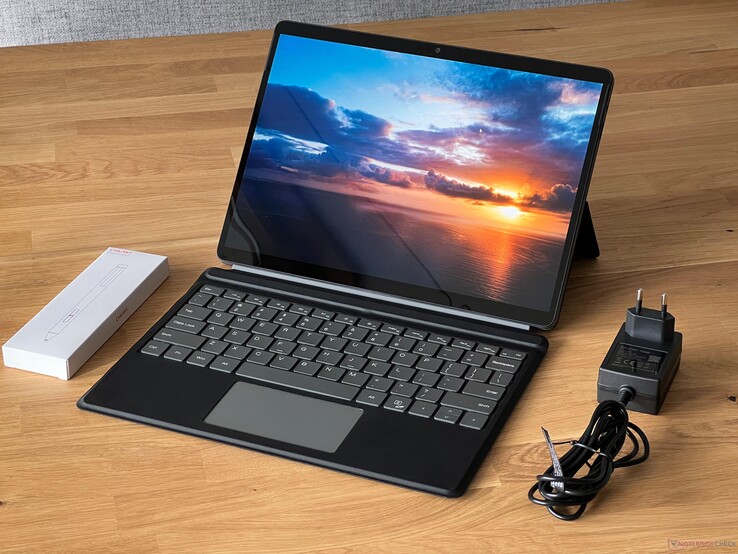













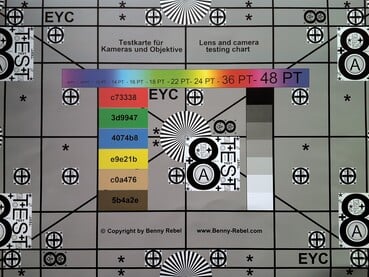
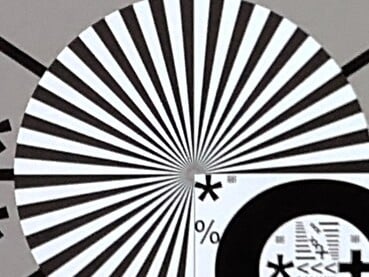
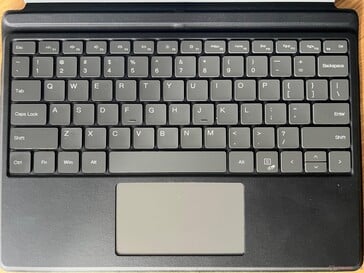
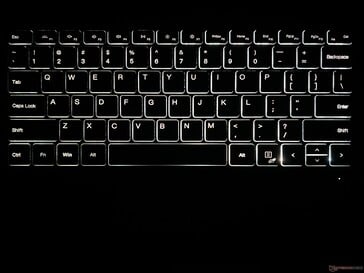
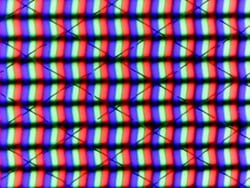
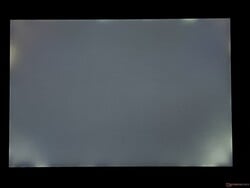
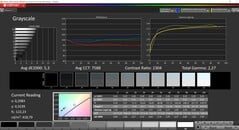
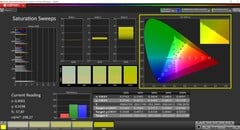

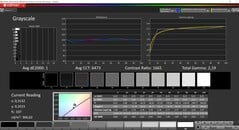
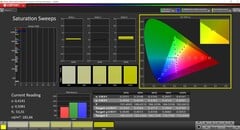

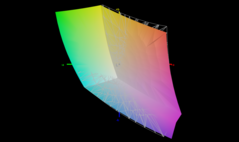
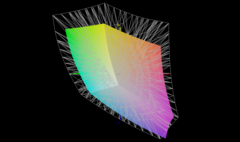

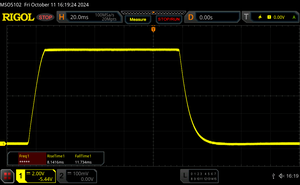

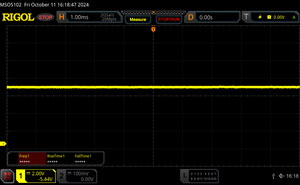
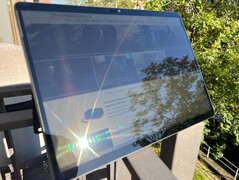

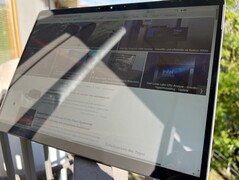

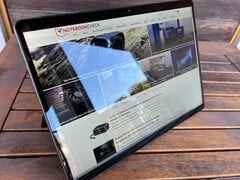
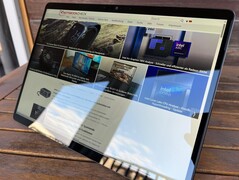

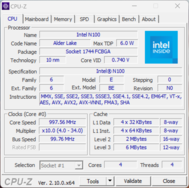
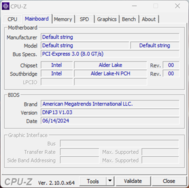
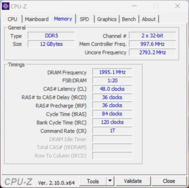
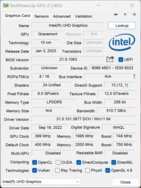

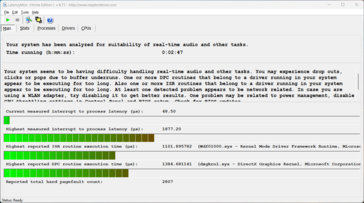
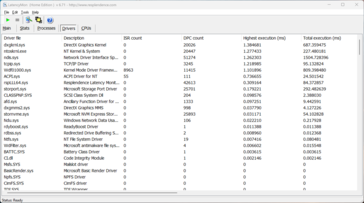

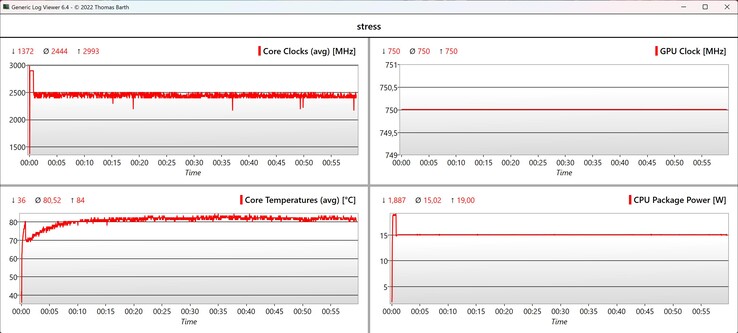
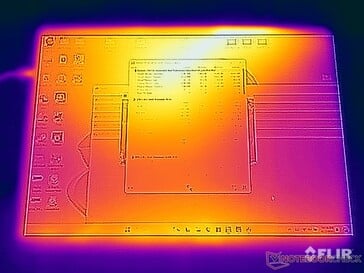
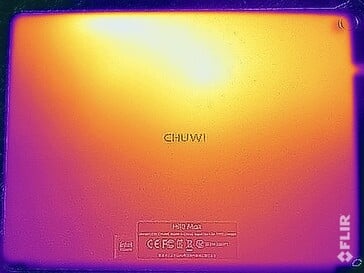
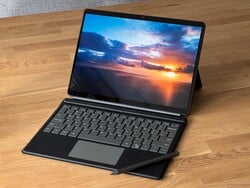
 Total Sustainability Score:
Total Sustainability Score: 








